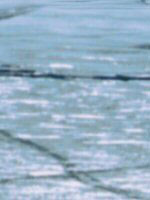 |
||||||||||||||
| Rapid | Climate Change | |||||||||||||
| PAGES/CLIVAR Intersection Workshop |  |
|||||||||||||
| 23 October 2006. Birmingham, U.K. | ||||||||||||||
|
Workshop details The PAGES/CLIVAR panel is a joint venture between the PAGES and CLIVAR programmes and is set up to better integrate the paleoclimate and climate dynamics communities. The workshop will synthesise our present knowledge about the event, its causes, mechanisms, impacts and relevance for our current understanding of the stability of the meridional Overturning Circulation (MOC). The workshop will comprise observationalists and modellers working on the 8.2 event or on various aspects of MOC. Workshop organiser:
Eystein Jansen, Bjerknes Centre for Climate Research, Bergen, Norway.
Attendance and registration The workshop participation will be by invitation only, in order to keep a small and focused workshop. Those interested may contact the co-ordinator at: eystein.jansen@bjerknes.uib.no.
Invited participants will be expected to register through the main
conference registration.
Partial funding may be available for participants in need of support for travels and subsistence. Please notify the workshop co-ordinator, Eystein Jansen, if your participation is dependent on financial support.
The 8.2 ka event The event is a potentially important exception to current interglacial climate stability and involves an abrupt centennial-scale event that occurred 8,200 years ago. Climate changes associated with this so-called 8.2 ka event are thought to be similar to, although of lesser magnitude than, the millennial-scale events of the last glacial period. The trigger of the event may have been the final drainage of a large lake dammed by the remnant North American ice sheet, releasing as much as 5 Sv for a period of less than a year. Ocean model simulations indicate that such a freshwater forcing would induce a reduction in the MOC, although a clear record of this response in the ocean has yet to be demonstrated. Because this event occurred during the current interglacial, it has been suggested as a possible analog to future changes involving an invigorated hydrological cycle. Assuming that comparable forcing is required to perturb the MOC, however, such an analog is unlikely since there is no existing reservoir capable of releasing freshwater at a comparable rate. Moreover, future responses are likely to increasingly differ as greenhouse gas concentrations continue to rise. Nevertheless, the 8.2 ka event presents several important research opportunities of direct relevance to CLIVAR/PAGES goals. In particular, because the event anomaly is large in a number of climate records, simulating the event with Earth system models may offer a rigorous test of model sensitivity and accuracy. Since there are multiple proxy records that do unequivocally record this event; this provides a good test of the sensitivity of specific tracer components within the models. These tracers in turn can then be useful in validating the model response to the specified freshwater forcing. |
|||||||||||||


